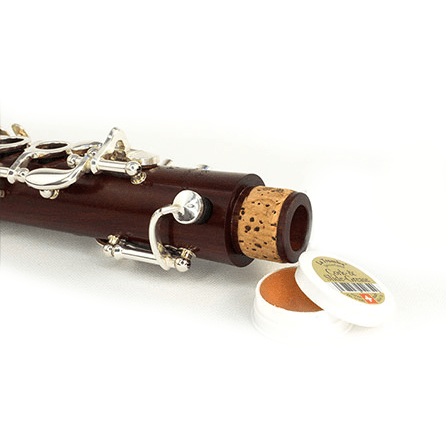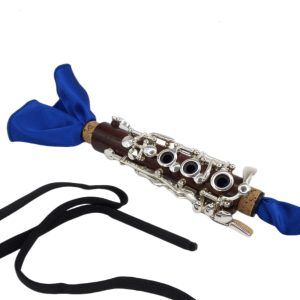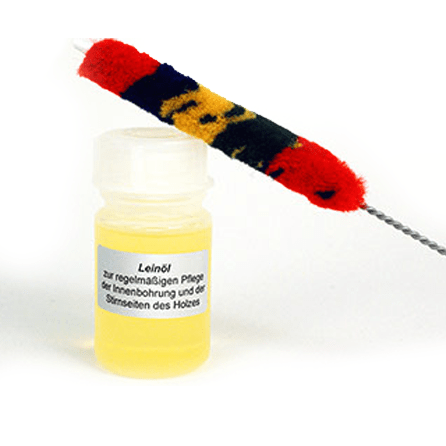Clarinet care
Tips from a professional
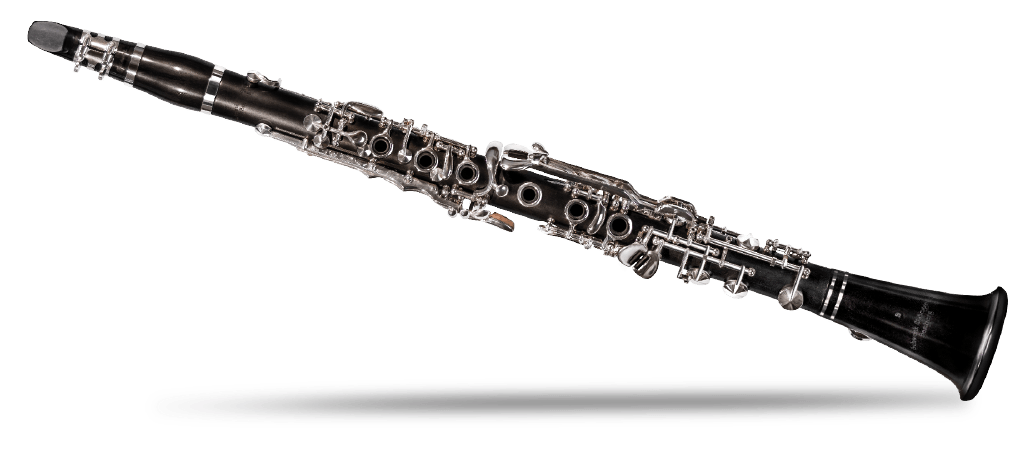
Regular and proper care of a clarinet is of great importance in order to maintain its optimum playability and sound quality. Regular cleaning and oiling of the wood, as well as cleaning the mouthpiece, can ensure the longevity of the instrument. Thorough cleaning also prevents the accumulation of dirt and moisture that could damage the wood. Careful maintenance is therefore essential in order to develop and maintain the clarinet’s full potential and to enjoy playing music for a long time.
Breaking in of new instruments
To make it easier to put the instrument together, it is advisable to regularly apply cork grease to the tenon corks. In the first 8 to 10 weeks, practice should be limited to short periods (approx. 30 minutes per day) to give the wood time to adapt to the new occurring stress. After playing, the instrument should always be taken apart and the inner bore thoroughly cleaned. It is also important to remove any water that has collected around the socket with a cloth. Leave the lid of the case open for a while so that the wood (especially the inner bore) can dry completely.
STORAGE OF THE MOUTHPIECE
Mouthpieces made of rubber can lead to a chemical reaction, causing the silver of the keywork to tarnish. Store the mouthpiece separately from the instrument or in an airtight box. With regular use, the reaction stops after a while.
OILING THE INSTRUMENT
During the first 3 months, the inner bore must be regularly coated with a thin film of linseed oil every 2 weeks. Instruments made of mopane and boxwood must be thinly oiled every two days if used daily. The bore must be absolutely dry. You can oil it before playing or wait at least 4 hours after playing. After the first 3 months, the intervals can be slowly increased.
Important: The oil must not get onto the pads; this will make them unusable. The cork can also stick together through contact with the oil. Also do not oil the keys!
Taking care of the keywork
Regular maintenance of the keywork of a clarinet is important for its optimal function. After playing, the keys should be wiped with a soft cloth to remove sweat and moisture – especially in the case of silver plating, as the acid composition of hand sweat attacks the silver layer. A soft cosmetic brush can be used to remove dust between the keys. Applying special key oil ensures smooth movement and prevents corrosion. Once a year, it is advisable to have the keywork thoroughly cleaned and readjusted by our workshop to prevent signs of wear. A well-maintained mechanism ensures that the clarinet plays smoothly and precisely.
Further information
If you have any questions about maintenance, please contact us directly. This can prevent problems such as cracks in the wood. We have prepared the wood for you with the greatest possible care. The owner is responsible for the further condition of the wood and the necessary care. You can also find various care products for your clarinet in our online store.
Wood treatment
and cracks
Your Seggelke clarinet should give you years of enjoyment. As a master workshop, we attach particular importance to the quality of all materials and components used. We are proud of the quality of our instruments and want you to embark on a musical journey full of joy with your new instrument.
Even with the greatest possible care when manufacturing and playing on an instrument made of a natural material such as wood, cracks can occur. But these do not necessarily affect the playability and function of the instrument. Proper care and instrument knowledge can help to prevent unsightly cracking.
Proactive
Clarinet care
In order to obtain the optimum sound from a wind instrument made of wood, it is necessary for the material to be involved in the vibration process. Various forces act simultaneously on the body material:
HUMIDITY
The humidity (rather air dryness) and room temperature have an effect on the wood of the instrument.
BREATH OF THE PLAYER
The warm and humid breathing air meets cold air in the instrument body. This creates condensation.
OSCILLATION OF THE AIR COLUMN
In the clarinet, it is not the solid material (wood) that vibrates but the air inside that acts on the body of the clarinet. The vibrating air column in the instrument extends from the mouthpiece to the bell (or a little beyond) or to the first open finger hole.
KEY MECHANISM
The key mechanism, especially the pillars, which are screwed into the body, act on the wooden structure when playing.
Notes for the
Cold season
After a long and beautiful summer, which was very unproblematic for the wood of your instruments, the heating period and the change between dry warm room air, cold air, outside temperatures below 10 degrees etc. is a challenge for the clarinet body. Help your instrument and preserve its value with a few conscious actions:
- Before playing, warm up the mouthpiece, the barrel and the upper joint well, but from the outside and not by blowing into them. A cold tube allows the warm and humid breathing air to condense more quickly!
- After the first 10 minutes, use the pull-through wiper and wipe out the condensation that has formed. A lot of moisture collects between the barrel and the upper joint in particular; simply tap or wipe this out.
- During breaks and after playing, dismantle the instrument and remove moisture from the bore and tone holes (blow out). We also recommend clamping paper (e.g. for coffee filters or cigarettes) between the pad and the tone hole. This allows the body to dry out slowly and prevents moisture build-up around the tone hole.
- It is also advisable to wrap the case in a cloth (towel) during the cold season. This also prevents mechanical faults (e.g. the keys getting stuck).
- If possible, you should not place the instrument near radiators.
- Short rule: After playing, open the keys and put the instrument disassembled in the case.
If you follow these recommendations, your precious instrument will survive the colder half of the year without damage!
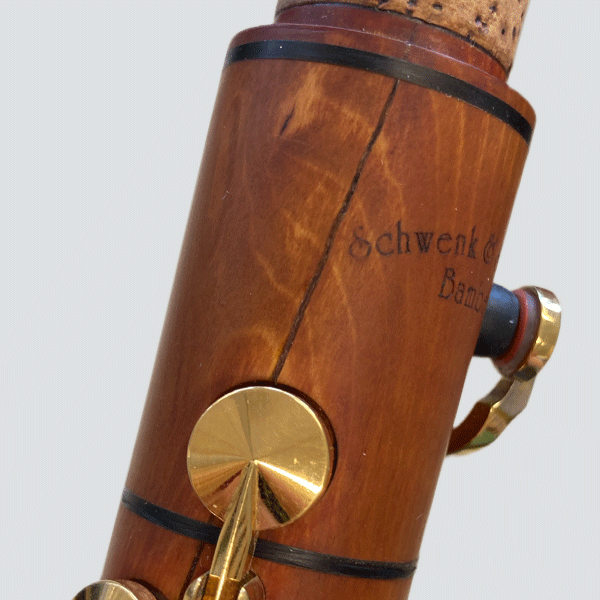
Wood crack in the upper joint
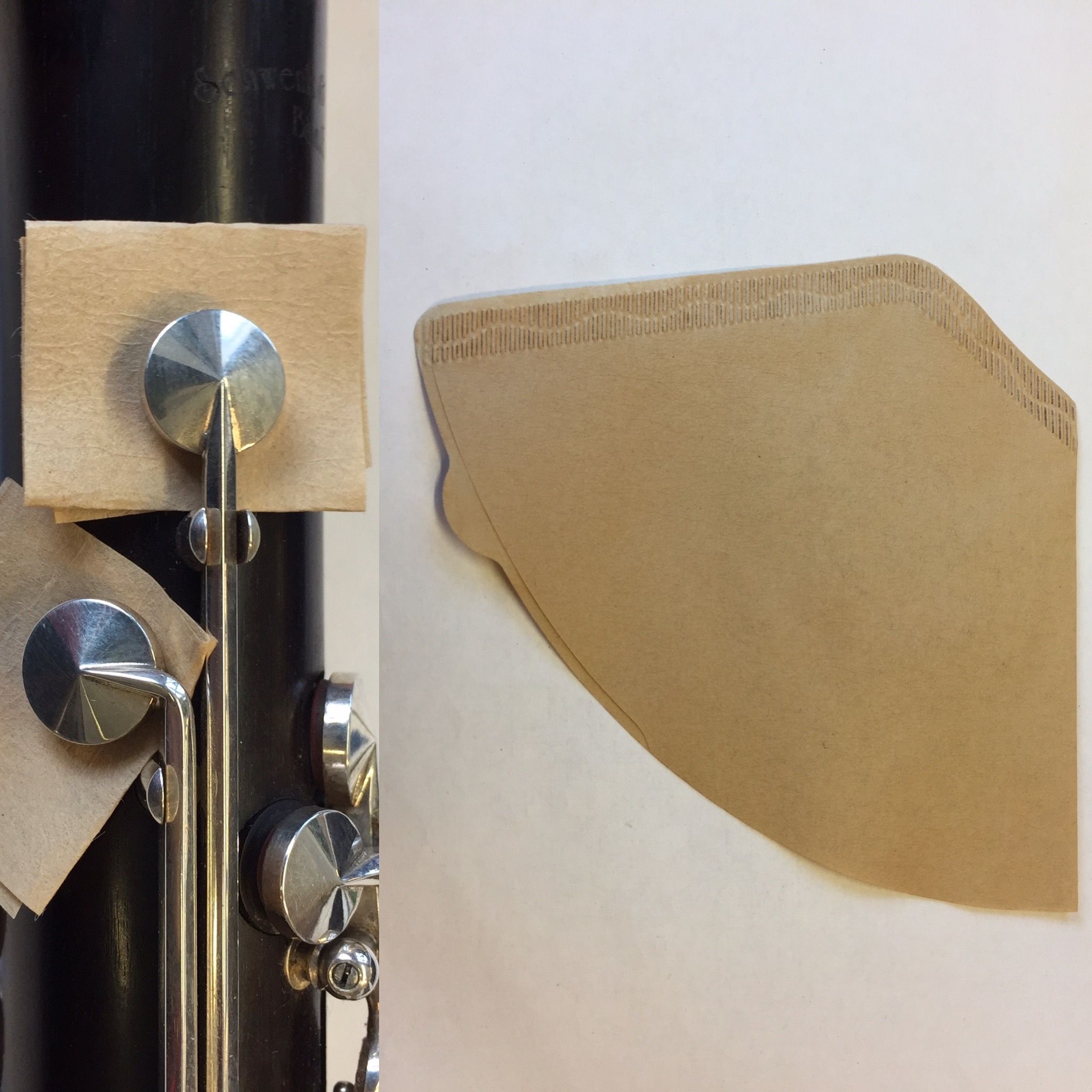
Crack prevention “filter bag“
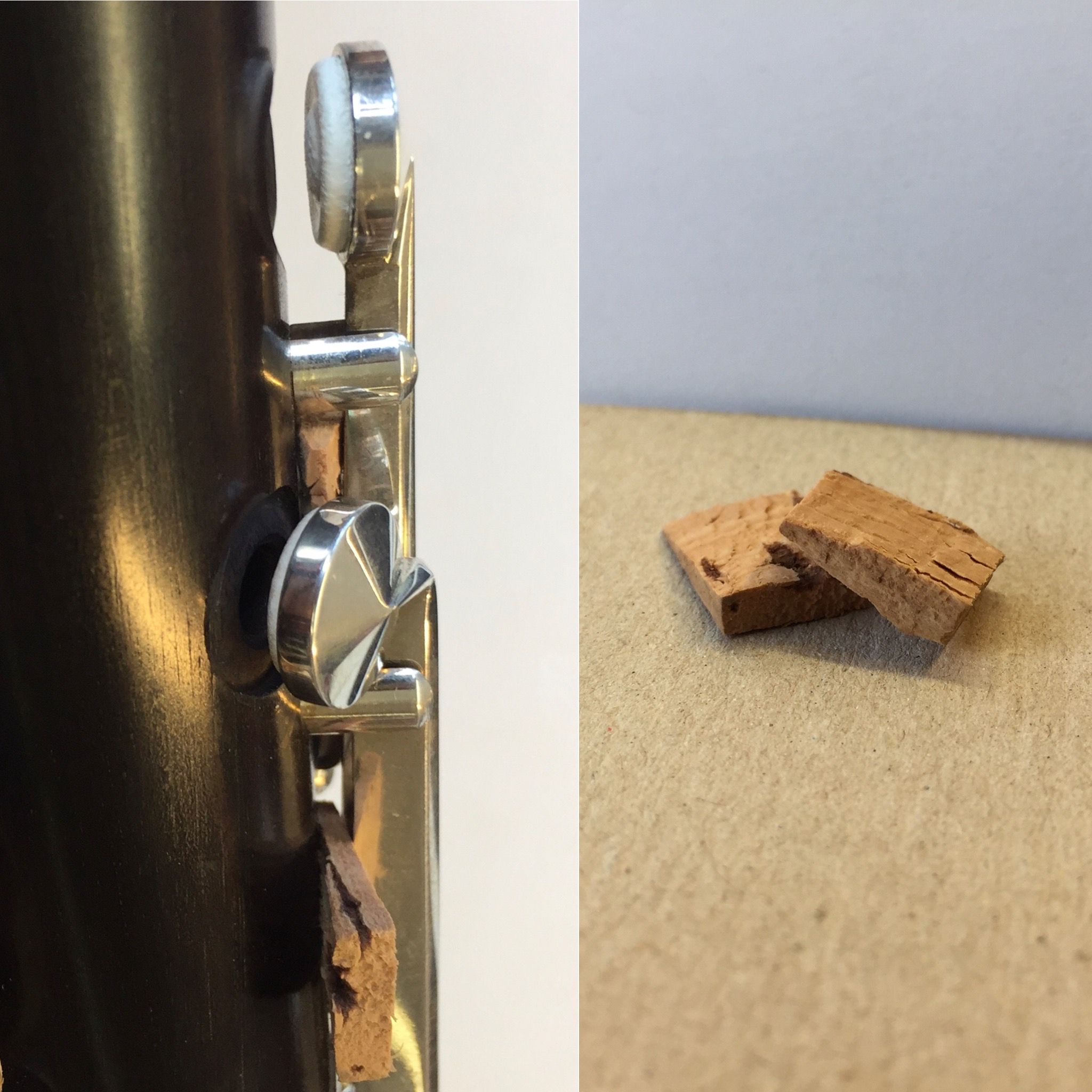
Crack prevention “cork tiles“
Wood must
breathe
NATURAL HUMIDITY REGULATION
The material influences the timbre. This is why we treat our woods, which have been naturally dried for years, with an open-pored finish. The condensation moisture that forms on the slightly rough inner bore hardly forms any “puddles”, but rather tiny droplets, similar to the “lotus effect” on the leaves of some plants. This means that the internal volume is not changed during long periods of blowing and any moisture absorbed is released by the wood when it is at rest – it can breathe!
OILING PROTECTS
With increasing age, the amplitude that the wood describes with swelling and shrinking becomes smaller and smaller. Regular oiling with linseed oil helps to protect the wood from “washing out”. This is particularly important during the initial period (about 3 months of regular playing) with a new instrument.
If cracking does occur, there are various ways of dealing with the problem. After degreasing the crack, it is usually sufficient to fill it with cyanoacrylate and wood saw dust. If necessary, we stabilize the affected region with one or more carbon rings. Rubber inserts can be used for tone holes that are crossed by a crack.
IF THERE ARE CRACKS
Important for you: as long as the tightness of the instrument is guaranteed, no losses are to be feared. In the case of larger cracks in problematic areas, it makes sense to replace the cracked body part completely and transfer the keys of the old joint to the new one. The instrument must then be carefully blown in again. We try to achieve an optimum compromise between sound quality and durability with the wood treatment we choose.



